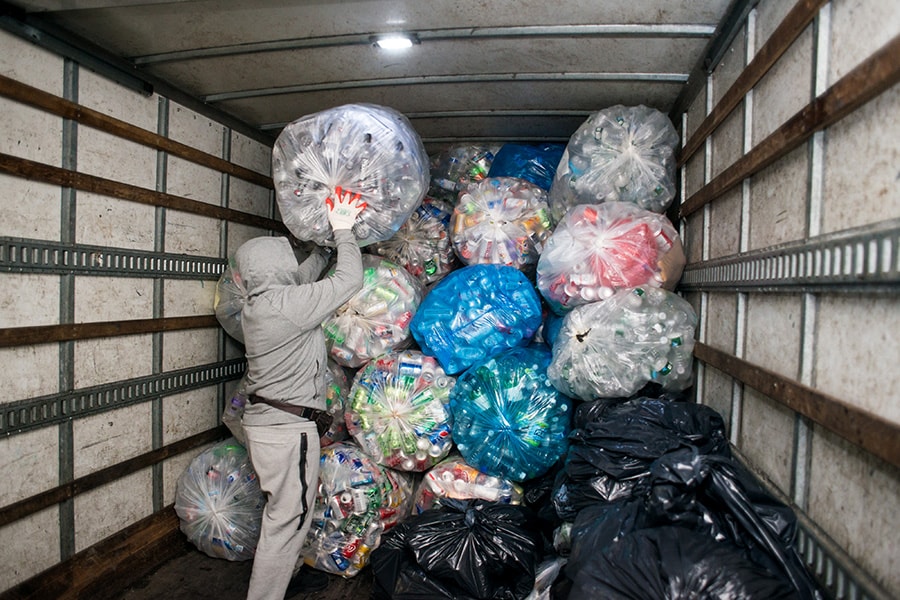
In New York, making ends meet on the 5-cent recycling deposit
The price of Manhattan real estate has forced every dedicated bottle-and-can redemption center off the island, leaving canners to feed their containers one at a time into supermarket redemption machines
 A hauler collects bags from can scavengers at a meet up spot under the Manhattan Bridge, Nov. 20, 2019. An entire economic ecosystem has sprouted from the artificial turf of a 5-cent deposit—fleets of trucks, clashes between canners and truckers, price wars, middlemen and coordinated handoffs. Image: Andrew Seng/The New York Times
A hauler collects bags from can scavengers at a meet up spot under the Manhattan Bridge, Nov. 20, 2019. An entire economic ecosystem has sprouted from the artificial turf of a 5-cent deposit—fleets of trucks, clashes between canners and truckers, price wars, middlemen and coordinated handoffs. Image: Andrew Seng/The New York Times
NEW YORK — At 3 o’clock one recent Friday afternoon on the Upper East Side of Manhattan, three blocks from the mayor’s residence at Gracie Mansion, a woman named Rosa approached an elegant prewar building where apartments rent for $13,500 per month.
On cue, the building’s porter brought out about 20 blue bags filled with cans and bottles and set them on the sidewalk. He slipped Rosa a handful of empty 50-gallon, clear plastic bags. “Anything you need, Mami.”
Rosa hunkered down to work. She fished through the blue bags for containers with 5-cent deposits, pulling out can after can after bottle after bottle and dropping them into her clear bag, where they landed like nickels tumbling from a slot machine.
Her rubber-gloved hands flew quickly and nimbly. She has been picking cans since the factory where she worked in Manhattan’s vanishing garment district closed a dozen years ago.
The sun dipped toward Central Park. Plaid-skirted teenagers from the private school around the corner passed by, shouting and giggling. A young man in a maroon V-neck sweater walked a wire-haired dachshund. Rosa did not look up. She had no time.
In one of the wealthiest neighborhoods in one of the richest cities on earth, the sight of millionaires strolling past people pawing through trash for the means to survive is familiar. But what happens to a salvaged can might not be.
©2019 New York Times News Service




